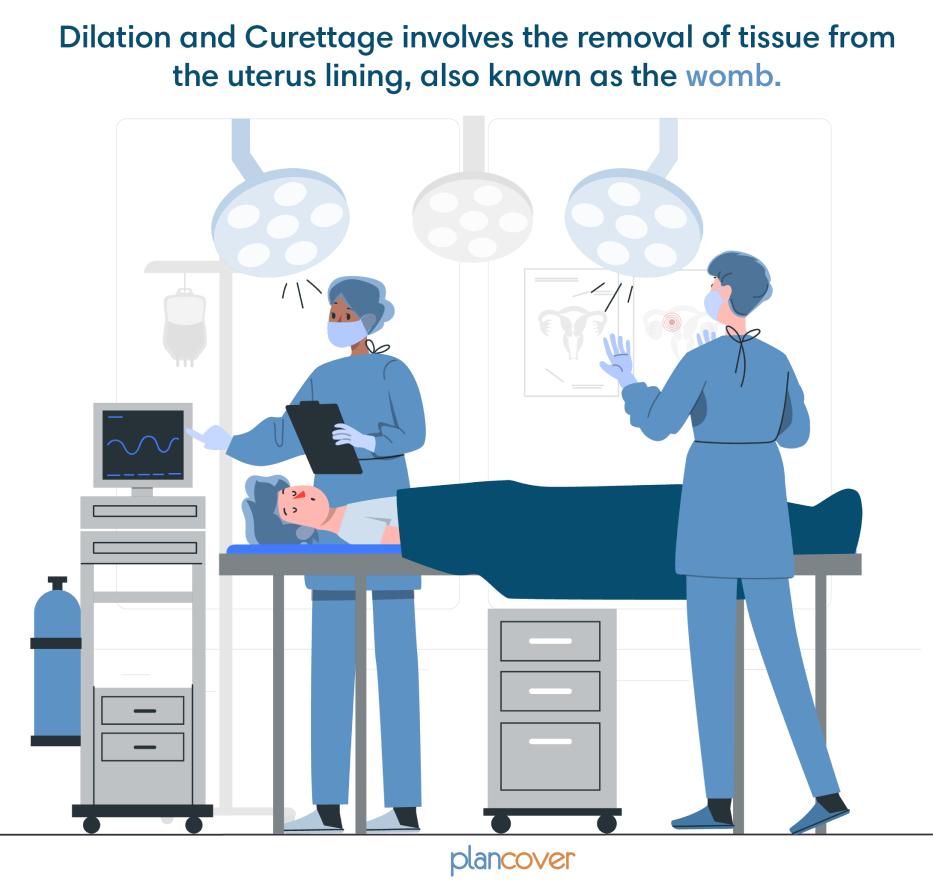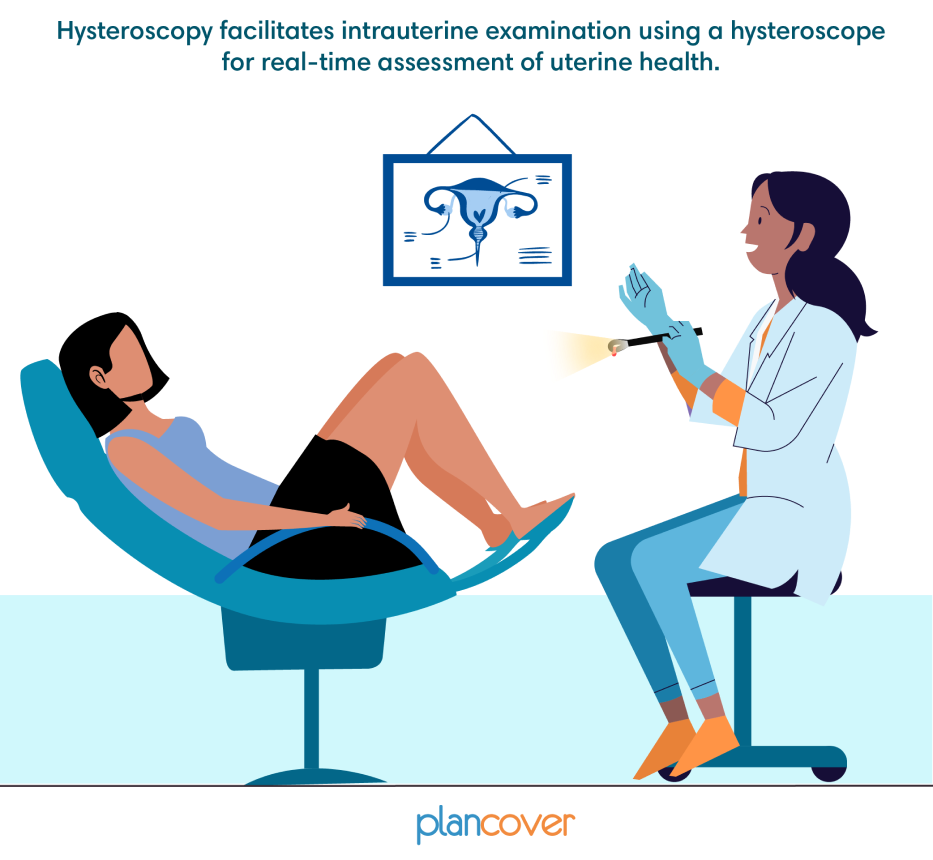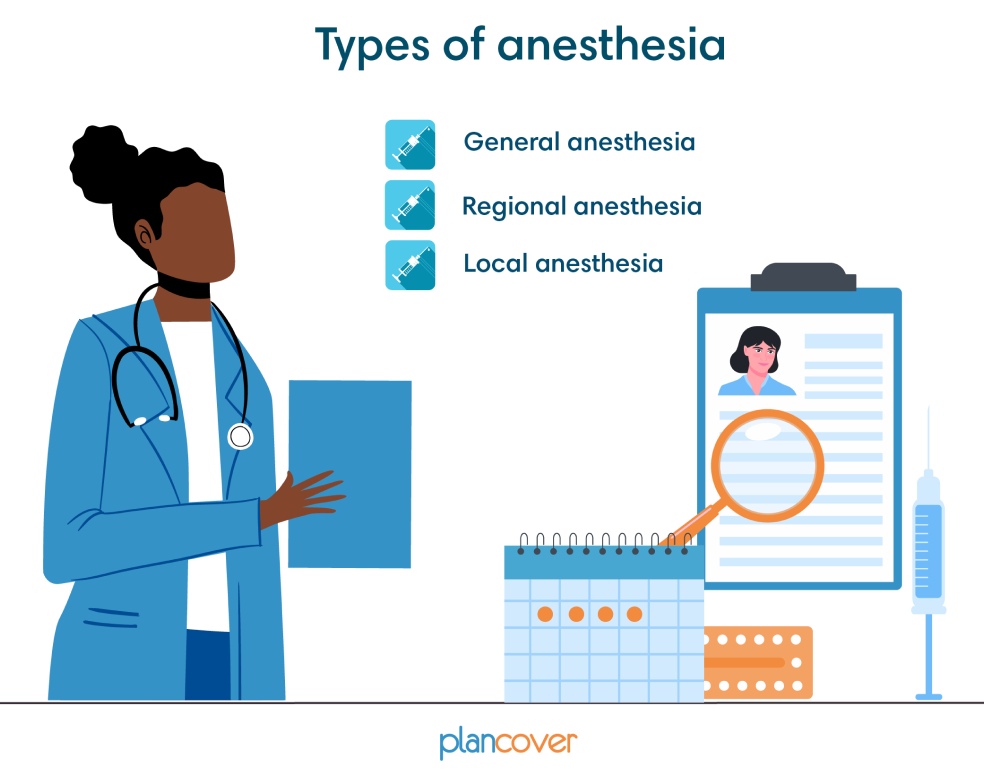Womb’s Passage: A Guided Journey through Dilation and Curettage
Understanding Dilation and Curettage (D&C)
Explanation and Objective Dilation and Curettage, often abbreviated as D&C, is a standard surgical procedure performed on females. It involves the removal of tissue from the uterus lining, also known as the womb. Typically, it’s an outpatient or Day Care procedure, meaning you can return home the same day. Here’s what you should understand:
Explanation: The term D&C originates from
Dilation of the cervix: This is when your healthcare provider opens your cervix, the gateway to your uterus at the top of your vagina. Ordinarily, your cervix dilates only during childbirth.
Curette: This is a slender instrument that your provider uses to scrape your uterine wall and gently remove tissue.

Why is a D&C necessary?
D&C serves both diagnostic and therapeutic purposes. Here’s the breakdown:
Diagnostic: Physicians employ D&C to examine and diagnose various conditions affecting the uterus. It aids in identifying issues like abnormal uterine bleeding, endometrial polyps (tiny growths), and even uterine cancer.
Therapeutic: D&C can also be a treatment method. It’s utilized to manage heavy menstrual bleeding, incomplete miscarriages (when not all pregnancy tissue is expelled), and retained placental tissue after childbirth.
Hysteroscopy and Dilation and Curettage (D&C)
Hysteroscopy:
Hysteroscopy lets your doctor take a closer look inside your uterus. They’ll gently insert a thin tube with a tiny camera and light called a hysteroscope. This gives them a real-time picture to check the health of your uterus.

D&C with Hysteroscopy:
In some cases, a D&C might be combined with another procedure called hysteroscopy. During hysteroscopy, a doctor inserts a thin, flexible device called a hysteroscope with a light and camera on the end into your vagina, through your cervix, and into your uterus. Combining D&C with hysteroscopy allows your doctor to see the inside of your uterus while performing the D&C, ensuring a more accurate and targeted procedure.
Procedure Details What occurs before a dilation and curettage (D&C)?
Your healthcare provider will take a comprehensive medical history before a D&C. You should ensure they are aware of any medications you take or allergies you have. Be sure to inform them if you suspect you’re pregnant. They may ask you to refrain from eating and drinking starting the evening before a D&C. Healthcare providers may suggest medication to soften and dilate (expand) your cervix before a D&C either by using a laminaria stick or by administering a medication.
What happens during a dilation and curettage (D&C)?
Prior to the procedure beginning, your healthcare professional will discuss the different types of anesthesia available with you. They will help you choose the best option based on your specific medical background and the reasons for your D&C and further pain management .. Here’s why they might suggest one type over another:
- General anesthesia, where you are put to sleep for the duration of the procedure. This might be recommended if the procedure is expected to be more complex or if you preferto be completely asleep.
- Regional anesthesia (like an epidural), which numbs you from the waist down while you remain awake and conscious. This can be a good option if you want to be awake but not feel any pain.
- Local anesthesia, where only the cervical area is numbed while the rest of your body remains unaffected. You stay awake throughout. This may be used for simpler D&C procedures. Your doctor will work with you to choose the safest and most comfortable anesthesia option for your individual needs.

Duration of the D&C Procedure
While the dilation and curettage procedure itself is relatively quick, lasting approximately 5 to10 minutes, the overall process takes longer. This is because there are additional steps involved, such as administering anesthesia and preparing for the surgery. After the procedure is complete, patients are typically required to spend a few hours in the recovery room before being discharged to go home.
Post-Procedure Care and Recovery
After undergoing a dilation and curettage (D&C) procedure, you will need someone to provide transportation and accompany you home, as you may not be able to drive immediately after the surgery. It is common to experience mild cramping and light vaginal bleeding or spotting for a few days following the procedure.
During this time, it is recommended to use sanitary pads instead of tampons to manage the bleeding.Most individuals can expect to resume their normal daily activities within a few days of the D&C procedure.
However, if your healthcare provider collected tissue samples during the surgery for analysis, you can anticipate receiving the results within approximately one week. Be sure to inquire with your doctor about the specific timeline and method for receiving these biopsy results.
Additionally, your healthcare provider will likely schedule a follow-up appointment within two weeks after the procedure to monitor your recovery and discuss any findings from the tissue analysis.

Benefits of a Dilation and Curettage (D&C)
A D&C can be a really important tool for your doctor. It helps them find the cause of problems like heavy bleeding, unusual growths in the uterus, and even cancer. It can even help protect your health after a miscarriage or abortion.
The diagnostic capabilities of the D&C allow healthcare providers to examine the collected tissue samples and determine if the patient has normal or abnormal uterine tissue, polyps, or cancerous growths. This information can guide further treatment decisions and ensure appropriate medical care.
Potential Risks of a Dilation and Curettage (D&C)
While a D&C is generally considered a safe and routine procedure, like any surgery, it carries certain risks. Potential risks associated with a D&C include uterine perforation, which is a small tear in the uterine wall that may occur if one of the surgical instruments inadvertently passes through it. Other risks include infection and bleeding.
In rare cases, women who undergo a D&C following a miscarriage may develop a condition called Asherman’s syndrome. This condition involves the formation of adhesions or bands of scar tissue within the uterus, which can lead to fertility issues and changes in menstrual flow.
However, Asherman’s syndrome is treatable with a minor surgical procedure to remove the adhesions.
It is important to discuss the potential risks and benefits of a D&C with a healthcare provider before undergoing the procedure.

D&C Coverage Under Health Insurance in India
Dilation and Curettage (D&C) is a common gynecological procedure, but its coverage under health insurance policies in India can be complex. Here’s a breakdown of key factors to consider:
Policy Variations:
Different health insurance plans offer varying levels of coverage for D&C. Basic plans might have limited coverage, while comprehensive plans often provide broader protection.
Reason for D&C:
Coverage can differ based on the reason for the procedure. Medically necessary D&Cs, like managing heavy bleeding or incomplete miscarriages, are generally covered. However, elective procedures like early pregnancy termination might not be.
Policy Specificity:
Each insurance policy has its own terms and conditions defining coverage details. Carefully review your policy documents or consult your provider for specific information on D&C coverage.
Additional Points:
Maternity Cover: Some plans offer maternity coverage as an add-on, which may include D&C for pregnancy complications or termination.
Exclusions: Certain policies explicitly exclude coverage for voluntary termination within a specific timeframe (e.g., less than 12 weeks).
Claim Settlement: The claim settlement process and reimbursement amount vary by nsurance provider.
Important Note: Voluntary termination of pregnancy within the first trimester is typically not covered under most health insurance plans in India.

It is important to note that the cost figures provided represent average estimates, and the actual expenses associated with a dilation and curettage (D&C) procedure may fluctuate based on several variables. Metro cities include major cities like Delhi, Mumbai, Bangalore, Kolkata, Chennai, and Hyderabad. Non-metro cities include all other cities and towns in India.

In this article, we have covered a range of concepts from upstream considerations to downstream implications of the Dilation and Curettage (D&C) procedure.
Starting upstream, we discussed the initial stages of awareness, including the purpose of D&C, its diagnostic and therapeutic benefits, and pre-procedural knowledge such as understanding the procedure and anesthesia options.
Moving downstream, we navigated through the actual experience and outcomes following the D&C procedure, including post-procedural care, recovery timelines, and implications for health insurance coverage.
Throughout this journey, our aim has been to provide you with a holistic understanding of the D&C procedure, empowering you to make informed decisions about your reproductive health. By covering concepts from upstream to downstream, we’ve strived to ensure that you feel well-prepared and supported throughout your healthcare journey.
Remember, your health and well-being are paramount. Don’t hesitate to engage in open and honest conversations with your healthcare providers, and advocate for the care that aligns with your individual needs and preferences. With the right guidance and mindset, you can navigate this experience feeling empowered and confident.
If you or a loved one are facing the prospect of a D&C, I encourage you to refer back to this guide as a resource to help you prepare and feel supported every step of the way. Your journey is unique, but you do not have to navigate it alone. Wishing you all the best as you prioritize your health and well-being.
By understanding Dilation and Curettage (D&C) procedures, you gain the power to make informed decisions about your health. This knowledge equips you to navigate your healthcare journey with confidence, ensuring you receive the care that aligns with your needs.
Whether you’re preparing for a D&C or simply expanding your understanding of reproductive health, this guide empowers you to take control of your well-being. Remember, knowledge is key, and by arming yourself with information, you pave the way for a healthier and more informed future.